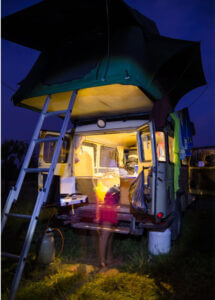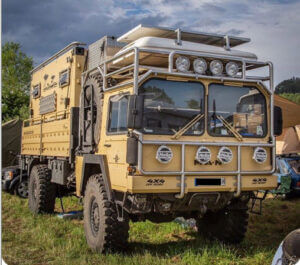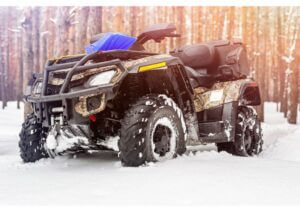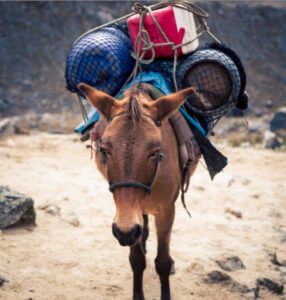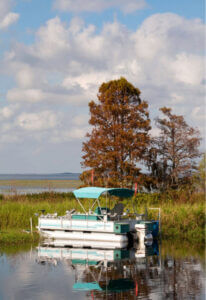Different Methods of Transport for Different Survival Scenarios
Survival isn’t just about hunkering down at home with tons of supplies. You may have to venture out at times or even leave the area completely, depending on the scenario you’re going through.
What would happen if roads were blocked or unsafe to travel through, and you were forced to use a different mode of transportation? Would you have anything else available?
Many survival preppers forget to focus on this area of navigation and safety. You want to diversify your options so that you and your loved ones are never stuck. This means you have the ability to go off-roading or even take water pathways when necessary.
You have to think of the conditions you might be forced to live in, and what means of transportation would work for you, both with short distances as well as longer travels. Relying on only one form of getting around is risky, and even if roads are operational and you have a car, if it breaks down and there are no mechanics to repair it, you’ll be stuck in an unfortunate situation.
The Best Traditional Transportation to Own
Even though you want options, you also know that traditional automotive transportation is something you want to have fully operational in the event of an emergency. You might already have a car for your family, but for survival purposes, you may want to upgrade to something more suitable for survival.
This might mean it has the capability to handle tough terrain, which might be going off-road as well as navigating through things like muddy roadways or higher water conditions.
If you consider whether you want a truck for off-road terrain or transporting supplies or perhaps a van you might need to bug out in, the choices you make could play a role in how well you navigate a difficult and dangerous situation in the future.
Think about fuel needs, too. A sedan might require less fuel than a big truck or van, and if gas supplies are scarce, this decision could make a big impact on your range. If you consider a hybrid or electric vehicle the harsh reality of emergencies is that it might be harder or impossible to get repaired. In addition, if the grid goes down, you might not be able to use it at all.
With your automotive options, you want to think of how you can modify your car, truck, or van to be a better option for survival. Consider installing roof racks so that you can carry more with you.
You might want to convert your car so that it can run on alternative fuel sources. Check out the different modifications available to you for your vehicle and then consider which ones would be best in a survival situation if you were to go off road or need to bug out with as many supplies as possible.
Keep in mind that it’s not just the car you have to prepare but also the supplies that go with it. If you’re using a fuel-based engine, then you need gas to get you to and from certain locations. Make sure you have fuel-enhancers that prolong the usability of the fuel you may have in jerry-cans, canisters and longer-term storage. Fuel can go ‘off’ and become useless if it is stored longer than a month. Have a diary system so you rotate your fuel cans and replenish them on a regular schedule with new gas.
When you are in survival events, there’s not always an automotive store you can stop by to pick up replacement parts. So, for those parts that wear and tear easily, such as belts or hoses, you want to have backup parts on hand and know how to repair them yourself.
Don’t rely on having to go online and look up a video on how to do it because you may not have access to the Internet any more. Instead, purchase or print out a manual so that you know how to make these repairs in a long-term survival situation.
Off-Roading Options to Help You Travel in Survival Situations
While some cars and trucks can go off road, you want to focus on other transportation options that have built-in off roading capabilities. These include things like mountain bikes, motorcycles or dirt bikes, and four wheelers.
These will allow you to go off the main road and into more rugged terrain such as in the wilderness or through a field if you need to head to a different location or escape a dangerous situation fast and easy.
With an off-road vehicle, you’ll be able to access more locations that you may not be able to reach if you were in a large street car. Some of the options, such as four wheelers or dirt bikes, are motorized so you need to have the correct fuel for them stored and ready to use.
But you also want to make sure that you have transportation options on hand that don’t require any type of gas or electricity to operate. Having a mountain bike or other form of bicycle can help you get around without any kind of motorized mechanism.
Many of these options can be modified just like a car, to allow you to use more fuel or carry more cargo with you.
If you already live on a homestead or you are planning to set one up an additional option available to you is using animals for transport.
Of course, many of our ancestors used horses and pack animals like donkeys or mules to get around. Animals not only carry your family to safety, but also carry supplies.
If you are in a snowy area, you might think of different types of packs such as sled dogs that you can use to transport yourself and supplies from one place to another. If you’re going to go with an animal transportation option, you have to know how to properly care for your animals so that they thrive in the situation.
A horse for example can even get in more locations than a four-wheel vehicle is able to access, but you have to know how to safely navigate different terrains and areas so that your ride is not put at risk, which would also leave you stranded.
When you’re using animals for transport you don’t have to think about gas. However, you will have to think about how it will keep up the energy that is needed to transport you and your supplies. That means you have to be traveling in areas that have natural vegetation for it to feed on – and provide feed from storage in winter time.
Make Sure You Can Travel Via Water
There may come a time when you have to leave dry land and travel via water. This might be across a lake or down a river, or even into the ocean. You want to make sure that you have small water transportation options as well as larger ones.
Start by making sure your family has kayaks or canoes that they can use if they need to hop into something during a flood or cross a body of water without having to get wet.
You can also get a boat that will allow you to safely gather yourself, your loved ones, pets, and supplies and travel further out into a body of water and wait out a survival situation or go to a new location.
Along with the transportation modes themselves, you also need to have the appropriate accessories on hand when you are traveling via water. This includes life vests for every member of your family, water GPS systems if possible, paddles and if it is a boat with an outboard engine you need the correct fuel for it.
Just in case you are stuck in a water living situation you want to make sure that you’re capable of fishing and providing food for your family. You’ll also need to be able to provide clean drinking water, too.
Always Make Sure That Your Transport Options Are Ready When You Need Them
Not only do you need to make sure your transportation options are operational, but you have to practice with your family so that everyone knows how to use them. Whether it’s riding a horse, driving a car, riding a bike, or using a boat – knowledge and practice is going to make sure everyone is capable of using any of the transport you have provided for them.
This includes maintenance issues that may arise. You want to make sure everyone knows how to properly take care of the different transportation options. This will include checking the tires and engine of your car, fixing a chain or gear on a bike, fueling up the gadget, or making repairs when and if necessary.
You want the knowledge spread across the family and not having just one person responsible for it at all times. Don’t forget other smaller means of transportation that might come in handy in an urban survival situation.
These might include skateboards, in-line skates or scooters that are easy to carry and use whenever a survival event unfolds. The portability of transportation is something many forget to consider.
So now that you have learned about the different modes of transport and how to prepare for getting around in a survival situation let’s go to the next chapter in our Survival Prepping 101 series – Part 22: How to Start Growing Your Survival Garden
If you missed the previous article you can read it here: Part 20: How to Develop a Tracking and Hunting Plan.
